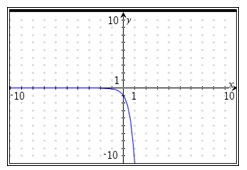In this section, you will learn about vertically shrinking (compressing) and stretching exponential and logarithmic graphs.
![]() Below are four functions, four graphs, and four descriptions of translations to the graphs of some exponential and logarithmic functions. Some functions, graphs, and descriptions have already been placed in the table. Place the remaining functions, graphs, and descriptions in the correct place.
Below are four functions, four graphs, and four descriptions of translations to the graphs of some exponential and logarithmic functions. Some functions, graphs, and descriptions have already been placed in the table. Place the remaining functions, graphs, and descriptions in the correct place.
Interactive popup. Assistance may be required.
The coefficient of the parent function, a, generates a vertical compression or stretch.
Interactive popup. Assistance may be required.
If |a| > 1, then the parameter will generate a vertical stretch. If 0 < |a| < 1, then the parameter will generate a vertical compression.
Interactive popup. Assistance may be required.
If the sign of the parameter, a, is negative, then it will generate a reflection of the parent function across a horizontal line.
How does the vertical stretch, vertical compression, or vertical reflection of exponential and logarithmic functions compare to the same transformations of other functions, such as quadratic, square root, or rational functions?
Interactive popup. Assistance may be required.
These vertical transformations work the same, regardless of the function family. The sign of the coefficient of the parent function, a, tells you whether or not there will be a reflection of the parent function across a horizontal line. The magnitude of the parameter, a, tells you whether there will be a vertical stretch or a vertical compression.
Interactive popup. Assistance may be required.
Which transformation does the coefficient of the parent function affect?
Interactive popup. Assistance may be required.
The graph of p(x) is reflected across the horizontal line and vertically stretched by a factor of 6.
Interactive popup. Assistance may be required.
Which parameter controls a vertical compression?
Interactive popup. Assistance may be required.
The equation of the parent function has been multiplied by 1 over 5 1 5 .

Interactive popup. Assistance may be required.
What would be the y-intercept of the graph of k(x)? Use that point to determine the transformation.
Interactive popup. Assistance may be required.
k(x) = 10x has been changed to j(x) = -1(10)x.